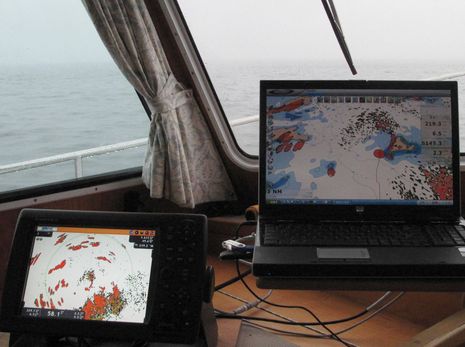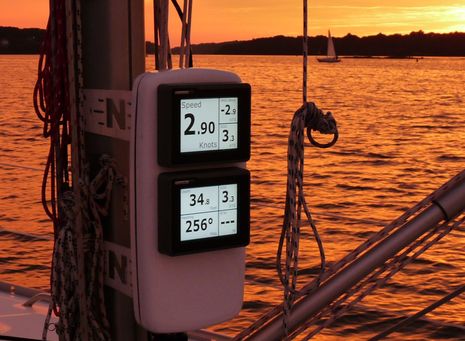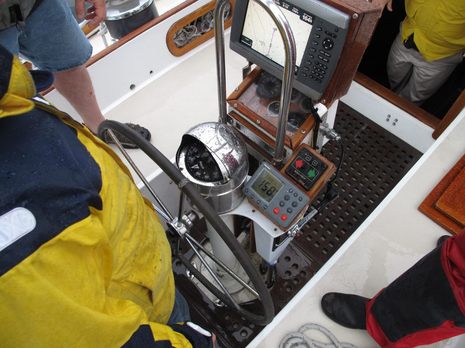ChartTable21; coming together, thank you!
Yesterday we saw the helm side of Gizmo’s pilot house, but you may recall that recently I asked for advice about the components that might turn the lovely port-side cherry chart table into a 21st century navigation & work station (and entertainment center) when its lid is up. Panbots responded with enthusiasm, I took the majority guidance, and, boy, am I pleased. That 26″ Vizio M261VP LED HD TV & monitor, purchased for $350 at Amazon, has been on the test bench for about 10 days, and it was joined last Friday by that minimal Mac Mini, also bought at Amazon
along with a Crucial 8GB RAM upgrade
. The setup and testing I’ve done so far all suggest that this is going to be a terrific solution to the project I’ve dubbed ChartTable21…



















